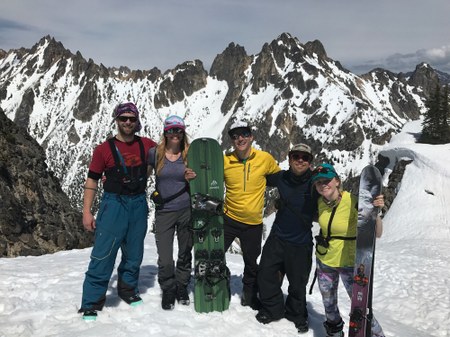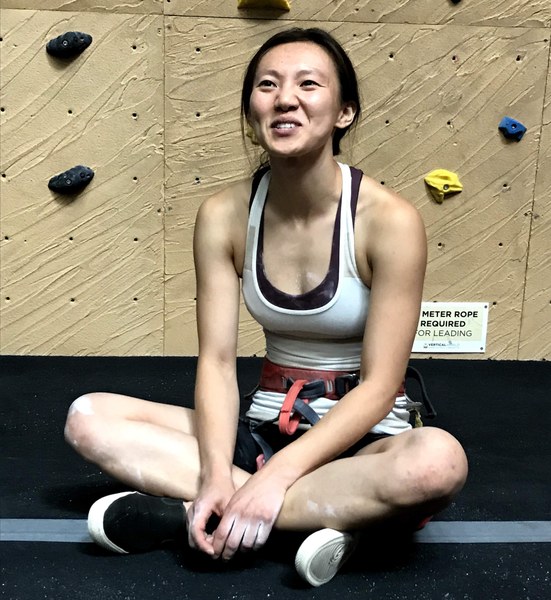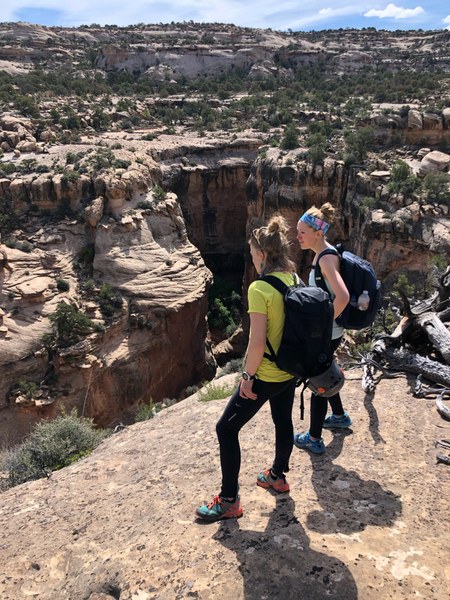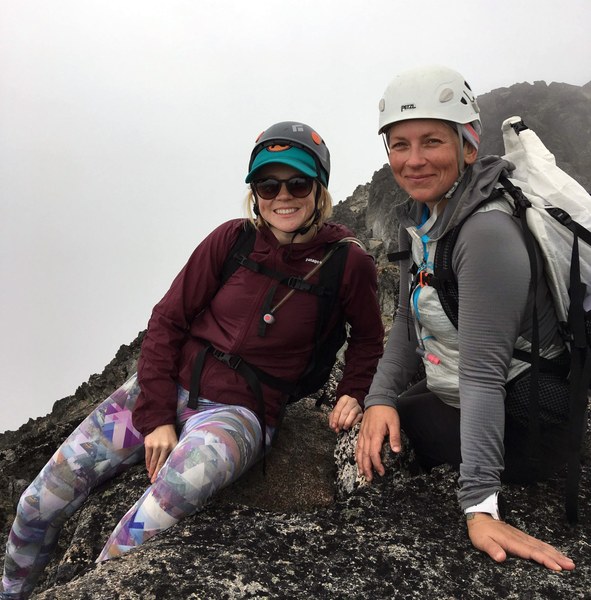
While I can feign ease at a party - and enjoy myself - I’m not a naturally social person. I choose to spend much of my free time alone reading books or knitting, and I’m content to see no one but my dog for days at a time. On paper, I read like someone who might struggle to make friends, but even though I’ve relocated to new cities several times in my adult life, I’ve been lucky to always find connections. I attribute my social success to the outdoor community rather than my own innate charm: the outdoors facilitates new and lasting adult friendships in a way that "normal life" does not.
Part ode to our community and part guide for those who may be seeking more human connections within it, here’s what I’ve learned about making friends on the trails, rock, and snow.
No one likes the autobelay
By my mid-twenties, I was no longer looking for friends. I’d amassed a solid crew of hometown and college buddies I knew I’d never lose. But when I got interested in backcountry skiing, and later rock climbing and mountaineering, I needed additional partners. Although I was intimidated to break into these more specialized circles of the outdoor world, my desire to (safely) get into the backcountry outweighed my hesitation, motivating me to put in the work to find specialized partners who grew into friends. In contrast with our often-individualistic society, you absolutely need other people to climb, ski, or do almost anything in the backcountry, so you have no choice but to go and find them. In adult lives filled with jobs and families, it’s a blessing that the outdoor world necessitates a little extra effort into what might be otherwise-abandoned friend-finding pursuits.
Connections thrive on routines
Before I moved to Washington, many people warned me about the “Seattle Freeze,” the so-called aloofness that clouds Seattleites and prohibits new friendships. While I can only speak to the past four years in this city, I have found the Freeze to be a complete myth - at least within my world of outdoor people. While I agree with the naysayers that you’re unlikely to make lasting connections with passersby on the bus or in a coffee shop, when you begin to see the same people on a regular basis - especially those who share an interest with you - friendships create themselves. You can’t control who shows up at your favorite spots, but you can control your own schedule, so introduce consistency. I climb at the gym on the same days at the same time every week, where I encounter many of the same people each time. After a certain amount of mornings belaying next to a familiar face, it would be weird not to chat, and some of these fellow early risers have become my climbing partners. Fitness and lifestyle regimens promote health in the obvious ways but may also provide the added bonus of familiarizing you with others who share your passions.
 The first friend I made in WA. We met in the lab, but Bingjie’s also a climber. Photo by Brianna Traxinger.
The first friend I made in WA. We met in the lab, but Bingjie’s also a climber. Photo by Brianna Traxinger.
Ask out your friend crush
Every Tuesday morning for the past two years, I’ve roped up at the gym with my friend Niki. The two of us have also adventured on climbing and skiing trips, lobbied in Olympia together, and shared Christmas with our significant others. Although we share interests, we only met after I made a desperate plea on the internet: my friends, sick of waking up early, boycotted my a.m. climbing sessions. Desperate to exercise before work, I revived my deactivated Facebook account to post on a climbing group asking for early partners. Four people responded, two of them being Niki and another friend that I train with regularly. This bold approach has always worked to find ski buddies; my longtime ski partner and I met through a local ski forum. While I recommend meeting for coffee to discuss skill level, risk tolerance, and training before setting out into the backcountry with a stranger, I do encourage everyone to get comfortable with asking new people to train or get outside together. This might be strange in the “real world,” but within the outdoor community it’s standard protocol. If you want something, you have to ask for it; in this case I asked for partners and got true friends.
Never miss out
While I used to be a shy person, one of the best skills I’ve gained is learning to socialize solo. I accidentally honed this skill by being single for a good chunk of my twenties. While you don’t need a romantic partner to attend outdoor events or pick up a new sport, without one you lack the convenient plus-one. Whenever friends couldn’t accompany me to an outdoor movie screening, an avalanche seminar, or a mountaineering course, my fear of missing out overcame my fear of showing up alone. While going alone began as a necessity, it became an asset; I learned that when you’re by yourself, you’re much more likely to talk to people you don’t know. I’ve met so many outdoor partners this way, and although I love to share experiences with my friends and boyfriend, I never turn down an invite when they aren’t available. It may seem counter-intuitive to make friends by leaving yours at home, but it’s a guaranteed way to expand your outdoor social circle.
I recognize that breaking into the outdoor community can be especially difficult for people of color, those of different abilities, and other under-privileged groups. I don’t mean to trivialize this access discrepancy, nor can I speak to it from experience. However, I believe that regardless of who you are, showing up to an outdoor space excited and ready to learn or share knowledge will help facilitate not only your athletic goals but also new connections, and we should all work to reach out to those who face more barriers to the outdoor community.
Built on trust
While the people you meet for a beer or a concert very well may be reliable friends, your life doesn’t depend on their character traits. Your belayer, however, directly determines your safety. Outdoor pursuits are reliant on ongoing, trusting relationships, which begets consistent and true friendships. In the outdoor community, we need to make solid connections for the safety and enjoyability of our outdoor activities. As a result, outdoorspeople are usually willing to put forth the extra work to vet and get to know a potential partner, a level of effort and follow-through that naturally facilitates lasting relationships.
 Exploring the canyons in Bears Ears National Monument. Photo by Jeremy Howard.
Exploring the canyons in Bears Ears National Monument. Photo by Jeremy Howard.
Tents are bonding
This is a simple concept: if you spend a few (either really good or really bad) nights on the side of a mountain with someone, you’ll leave feeling very strongly towards that person. Assuming your post-trip emotions are more positive than negative, your shared epic (in any sense of the word) will cause your neurotransmitters to produce bonding chemicals that will make you want to spend more time with the partner who kept you laughing while you were weathered out on a climbing trip.
Sharing your skills
A wonderful part of the outdoors is that we often meet partners through instruction; whether you are a casual hiker or an experienced mountaineer, there’s a lot to learn. A side effect of this reality is that our instructors and classmates often become friends. Furthermore, those with the most knowledge tend to be those who have the most years of experience, facilitating intergenerational friendships with younger trainees. Keep the cycle of new friendships going by sharing your own expertise through formal instruction or by mentoring new outdoor community members. Volunteering your time in outdoor advocacy work is also a great way to not only protect our lands and community, but also introduce you to others of all ages and abilities who share your values.
Forming meaningful connections as an adult takes effort, but those of us fortunate enough to be a part of the outdoor world have an advantage. The outdoors condenses our communities into a more accessible network with shared values and interests, so let us welcome in new people who might not have had the opportunity to experience the wild places, and people, we all love.
 Climbing Cashmere Mountain. Photo by Richard Lockwood.
Climbing Cashmere Mountain. Photo by Richard Lockwood.
Lead Image: Ski touring with friends made through The Mountaineers, one of whom became my boyfriend. Photo courtesy of Brianna Traxinger.
This article originally appeared in our Summer 2020 issue of Mountaineer Magazine. To view the original article in magazine form and read more stories from our publication, visit our magazine archive.
 Brianna Traxinger
Brianna Traxinger